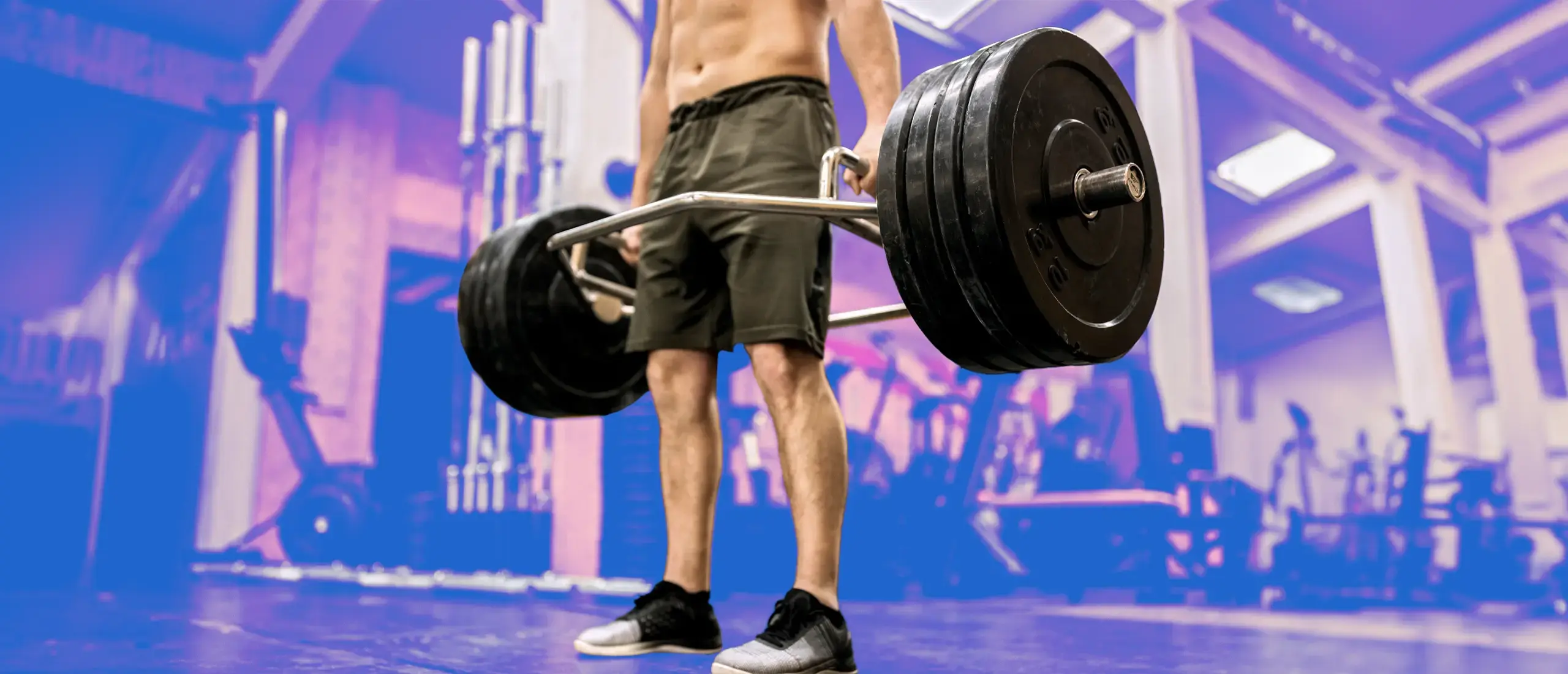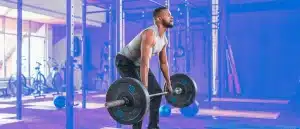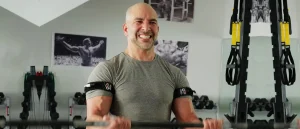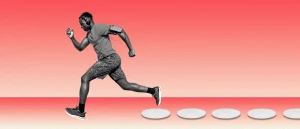Barbell Deadlifts Killing Your Back? Try Hex Bar Deadlifts Instead
- By Sydney Bueckert, NASM C.P.T., C.E.S., F.N.S., G.P.T.S.
- November 22, 2023
Deadlifts are the bread-and-butter of a functional fitness routine: You’ll rarely find one without the other. The problem: They can be hard on your lower back.
That’s where hex bar deadlifts come in.
Hex bar deadlifts use a hex bar (AKA a trap bar), which automatically shifts the load from the front of your body to the sides. This slight adjustment can help relieve back pain while checking very similar boxes to the standard barbell deadlift.
According to personal trainer Samantha Candler, NSCA and NPTI CPT, hex bar deadlifts are good for athletes of all levels—from true beginners to strength seekers. Here’s how to master them.
What Are Hex Bar Deadlifts?
Hex bar deadlifts are simply a deadlift with a hex bar—a bar with a hexagon shape that puts the lifter smack in the center of the weight—in place of a barbell. “No matter the implement (barbell, hex bar, kettlebell, etc.), a deadlift is simply picking a weight up from the floor to the hips using a hinging motion,” says Candler. “With a kettlebell, you stand over the weight; with a barbell, you stand behind it; but, with a hex bar, you step into the bar and thus disperse the weight to the sides of your body.”
Hex Bar Deadlift vs. Barbell Deadlift
Hex bar deadlifts and barbell deadlifts are both effective ways to achieve a hip-hinge pattern (when your spine stays neutral as you bend forward). You might not have heard of a hip hinge pattern but you do it every time you bend to pick up a package, a laundry basket, or groceries from the ground. Nailing a hip hinge is key for effectively targeting the glutes and hamstrings and improving movement in and outside of the gym.
Barbell deadlifts are the quintessential hip-hinge exercise. When done with perfect form, there’s nothing wrong with barbell deadlifts. Keyword: when. Because a barbell deadlift puts the load in front of your body and starts closer to the ground, it’s the perfect storm for form errors. It’s the exact position just before you leave and return to the ground that many people relax the lats, or let their chest fall below their hips—common technical mistakes that end in your lower back taking on the load. This takes the focus off your glutes and hamstrings, and increases your risk of injury.
Hex bar deadlifts bypass these common mistakes. “Because the weight stays beside the lifter instead of in front of them, hex bar deadlifts are typically easier on the lower back (extensor) muscles than barbell deadlifts,” explains Candler. Many hex bars also have two different handle heights. The higher of the two reduces your required range of motion needed to reach the load, she adds. This can make hex bar deadlifts more approachable if you suffer from back pain, have limited range of motion, or struggle with deadlift form.
Although hex bar deadlifts mean less overall range of motion, one study found that using a high-handle hex bar deadlift increased peak force, peak velocity, and peak power when compared to a traditional barbell deadlift (1).
How to Do a Hex Bar Deadlift
Ready to give hex bar deadlifts a shot? Here are Candler’s tips for nailing a perfect rep:
- Start by standing in the middle of the hex bar.
- Then, take a top-down approach: Extend your arms straight in front of you like a zombie, but with your thumbs up. Holding this, pull your shoulder blades toward each other. Notice how the space in your armpits just got a bit tighter. Now imagine you’re holding a $100 bill in each pit.
- Next, hinge at the hips, sending your butt back behind you. If you’ve still got your $100 bills, your hands should now be facing the floor. Pull them back so they are beside your shins.
- From here, bend your knees to help you reach the handles. Your shins should stay perpendicular to the floor.
- Now you’re ready to deadlift. Push all corners of your feet into the floor to stand up tall, never losing those $100 bills.
Benefits of Hex Bar Deadlifts
According to Candler, the benefits of hex bar deadlifts are simple: “They allow you to move more weight with less risk for injury.” A win-win. The beauty of a hex bar deadlift is it allows you to attack your glutes and hamstrings the same way as a barbell deadlift while putting the load in an ideal position (more central, and higher off the ground) to improve form and reduce strain on your lower back from the jump. Cleaner technique, especially when paired with heavy loads, means more gains.
Downsides of Hex Bar Deadlifts
While hex bar deadlifts are great, there are some situations where a traditional barbell deadlift is better. “Powerlifting athletes will need to train predominantly with a barbell, since that’s what’s needed in competition,” says Candler.
For the rest of us, Candler argues that a barbell might have more functional carryover to real life. “Think about lifting the end of a couch: You can’t get in the couch to lift it. The couch must be in front of you, similar to a barbell deadlift,” she explains. That said, a hex bar deadlift is functional for some situations too, like bending over and lifting two bags of groceries at your sides. Still, for this reason it’s a good idea to master both moves.
About the Expert:
Samantha Candler is personal trainer with a background in running, strength, and functional movement. She’s a NSCA and NPTI certified personal trainer, NASM corrective exercise specialist, USA Track & Field coach, Precision Nutrition Level 1 nutrition coach, and Functional Movement Systems Level 1 certified. She believes working out is a celebration of what the body can do, and lives for seeing her team hit goals and realize their own strength.
References
1. FLake, J. et al. (2017). Effect of a Hexagonal Barbell on the Mechanical Demand of Deadlift Performance.












